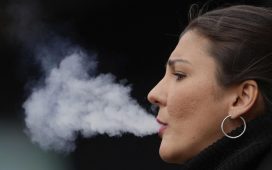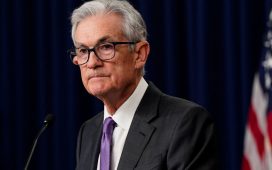Tech industry executives for years have promised that drones — aircraft vehicles that operate without a pilot on board — are the future of delivery. The small, buzzy aircraft have increasingly emerged in the skies above U.S. cities, dropping products including food and medical supplies at or near peoples’ doorsteps.
But mainstream implementation of drone delivery services is likely still years off, as industry leaders say the federal agency in charge of civil airspace is taking its time crafting regulations that will make it legal to fly drones for commercial purposes, including delivery.
“The technology has moved quickly forward, and the policies and regulations have lagged behind,” Lisa Ellman, the co-executive director of the Commercial Drone Alliance in Washington, D.C., told The Hill in a phone interview this week.
The Federal Aviation Administration (FAA) has, over the past year, allowed top companies to test drone delivery programs in urban and rural areas across the U.S.
The agency is collecting information on how those programs play out in order to inform the rules for commercial drone use, which experts say could make drone delivery legal within the next two to five years.
Under that pilot program, which was enabled by an executive order signed by President Trump
Major tech industry players have ambitious plans. Uber last week announced that it has received FAA approval to start making food deliveries to customers in San Diego this summer. The week before that, Amazon unveiled its latest updates saying in a blog post that it expects to start “delivering packages via drone to customers within months.”
And in a game-changer for drone delivery, Wing Aviation — which is owned by Google’s parent company, Alphabet — in April announced that it had received certification from the FAA to begin delivering small consumer items in two rural Virginia communities.
Ellman described that authorization, which classified Wing Aviation as an airline, as “precedent-setting.”
But stakeholders in drone delivery complain that the FAA’s approach has largely been overly cautious. And privacy activists, labor unions and consumer groups for years have pushed to implement safeguards before widespread deployment, arguing the sensitive technology poses high-stakes safety, surveillance and employment concerns.
Sen. Ed Markey
“Yet … we must acknowledge that while drones offer many benefits, there are safety and privacy risks,” Markey added.
Sen. Richard Blumenthal (D-Conn.) told The Hill that he believes there need to be “rules of the road.”
Activists have raised concerns that drones could lead to mass surveillance if equipped with facial recognition software and other sensors, concerns the FAA will have to address when developing a national framework.
As of right now, mainstream commercial use of drones is significantly curtailed because it is mostly illegal to operate commercial drones over people, at night or beyond the operator’s “line of sight.”
And there are logistical issues — federal agencies including the FAA and NASA are working to develop a traffic management system for the sky, which would prevent drones from running into each other and crashing. Regulatory bodies and members of the industry have established a research team dedicated to coordinating the development of the system, dubbed the Unmanned Aircraft System Traffic Management (UTM).
“Package delivery will hinge on UTM being implemented,” Diana Cooper, the senior vice president of policy at top drone company PrecisionHawk, told The Hill in an interview.
“We have cars and motorcycles and pedestrians on roads today because we have a certain infrastructure that allows them to move around safely,” Cooper said. “[This is] about creating that infrastructure in airspace.”
Drone companies have been waiting more than a year for the FAA to weigh in on “remote identification,” a demand from the national security community that would enable law enforcement to identify and track drones and their operators in flight.
The FAA has indicated multiple times that it is going to publish a proposed rule on so-called remote ID, which would identify each drone according to a kind of virtual drone license plate. But the agency has delayed publishing the rule for months despite previously saying it would come out in July.
Angela Stubblefield, a deputy associate administrator at the FAA’s Office of Security and Hazardous Materials Safety, on Tuesday told the Senate panel that the agency is planning to publish the rule in September, calling it a “crucial stepping stone.”
“It is critical we get this right,” Stubblefield said.
After the FAA proposes the rule, it will likely be another two years until drone delivery becomes a reality.
In San Diego, Uber is trying out a system that would get around some of the major challenges of delivering in dense urban environments. The drones will take food from partnering restaurants and drop it off at a landing zone. After that, couriers will collect the meal and drive it to the customer.
An Uber Elevate spokesperson told The Hill in a phone call that the company is hoping to expand drone delivery to all cities where it’s possible, adapting to the challenges in each location.
The spokesperson called the industry “very immature right now,” warning “there’s going to be things we’re not even aware of.”
Not all cities will see drone delivery become widespread. New York City in an April filing with the FAA raised concerns about introducing drones into its complicated and crowded airways. Washington, D.C., is a no-fly zone due to security concerns.
“I don’t think D.C. is going to be the top market for drone delivery,” Cooper said.
But commercial drone use is expanding rapidly in the country, with the FAA reporting about 4,000 of the more than 1 million registered drones are being used by businesses. And billions of dollars of goods are on the line, with some estimates valuing the global market for business services using drones at $127 billion.
“This year, we’ve really seen a big change in the United States,” Cooper told The Hill.
Ellman said there are a host of drone delivery services that are on their way — including blood delivery to rural hospitals and getting packages to consumers. “But,” she said, “the rules need to move forward.”
“Time is of the essence here,” Markey said during the hearing. “We’ve just got to get this done.”






